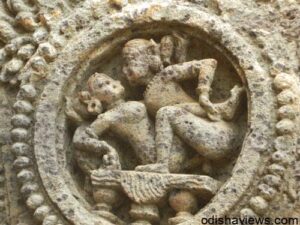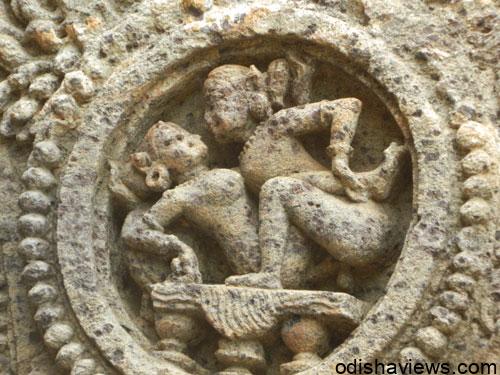According to the traditional Bhavishya Purana, Samba, the handsome son of Lord Krishna, once created the error of slighting the mischievous sage Narada. In revenge, Narada tricked Samba into visiting a forbidden place where the women of the court were bathing. When Lord Krishna learned of this, he cursed his son, and therefore the young prince was immediately plagued by a disfiguring skin disease. Samba pleaded his innocence and proved it. His repentant father told him to wash within the Chandrabhanga river. When Samba was cured, he designed a temple in honor of Surya, the Sun God.
The Sun God has continually been revered because of the curer of skin diseases. When the Ganga King, Narasimhadeva I (1238-1264 A.D.) designed his sun temple here, in Orissa, he conjointly relocated the Samba legend within the town of Kon (the corner) Arka (of the sun).
Walk down the steps, set within the slope of the retaining walls, and you’ll encounter an architectural drama. The body of the traditional temple is hidden by the increase of a pillared building. In all probability, this was the Bhoga Mandip or Festive Hall.
Climb the steps of the Bhoga Mandip, terribly slowly, and let the temple reveal itself. it’s magnificent however, nevertheless, it had been solely the doorway hall of the good temple. Behind it, soaring for seventy meters into the sky, was the tower protecting the sanctum. Sadly, that collapsed a century ago, leaving solely its pillared platform. And to stop the doorway hall from suffering constant fate, an English architect had it crammed with sand that, possibly, was the wisest factor he may have done.

Walk around the remains of the Sun temple, admiring its intricate sculptures. The temple, currently identified as a World Heritage web site by UNESCO, replicates the legendary Chariot of the Sun. Twelve huge carved wheels seem to support the temple-chariot that is drawn by seven galloping horses. They represent the seven days of the week. The charioteer is that the Sun God, himself, though the most idol once enshrined within the sanctum of the temple was removed to Puri once the temple began to crumble: it had been designed of that easily-eroded stone, khondalite. One reason for the abandoning of the temple may well be that it had been shunned by the native pundits. Surya was thought to be an alien god brought in from Iran beside his fire-worshipping clergymen, the Magi. a fine-looking carving of Surya, still standing within the temple, shows him sporting knee- high boots, normally related to equestrians. All different Hindu deities are barefoot.
Primarily, however, this temple was meant to glorify the life and times of a king and his court. the stress of the sculptures and carvings, therefore, is on luxury, valour, pomp and sensuousness. Keep this in mind once you walk round the temple. Let your imagination fly to ascertain and listen to the musicians and therefore the sounds of the royal hunt; the amorous whispers of the courtesans leaning languidly against pillars, or perfuming their bodies within the smoke of fragrant fires; hear the soft pad-pad of a lumbering elephant and therefore the tong-tong of the bell around its neck; scent the aromas of wealthy viands simmering in an exceedingly cooking pot, Konarak, then, was a burgeoning royal capital.
Even within the sixteenth century, when the Mughal chronicler Abul Fazl wrote his Ain-i-Akbari, twenty-eight temples stood here: six outside the doorway and twenty two beyond its enclosing walls. Today, the ruins of solely a few stay. the location museum, however, has a powerful assortment of sculptures found abandoned when the temples collapsed.
Traditions, though, don’t seem to be as simply eroded because of the stones of temples. Every year, when the moon waxes within the January-February month of Magha, an excellent truthful is held around a little saline pool, 3 kilometers from the temple. The pool has been renamed the Chandrabhanga. Pilgrims bathe before dawn and look ahead to the red orb of the sun to rise out of the ocean. Then they walk to the temple for their wealthy rituals of worship.

